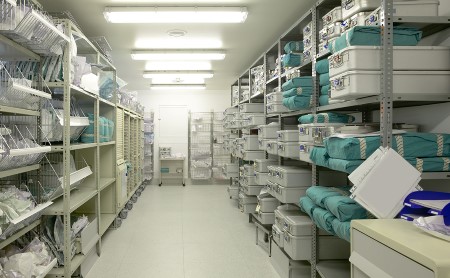Public Health Infrastructure Proposals Gain Steam in Congress
April 15, 2021 | Emma Lange
 The COVID-19 pandemic has underscored the consequences of decades of underfunding. To ensure we are better prepared for future pandemics and biological threats, we must consider the long-term investments required to bolster our public health infrastructure and workforce.
The COVID-19 pandemic has underscored the consequences of decades of underfunding. To ensure we are better prepared for future pandemics and biological threats, we must consider the long-term investments required to bolster our public health infrastructure and workforce.
Last month, Trust for America’s Health released its annual report on the state of public health preparedness, Ready or Not 2021: Protecting the Public’s Health Against Diseases, Disasters, and Bioterrorism. The report identifies varying levels of preparedness throughout the 50 states and Washington, D.C., and concludes that states “are not sufficiently equipped to respond to a pandemic without federal help.” The report recommends that the federal government provide “stable, sufficient funding” to improve global and domestic public health security.
American Jobs Plan
One of the immediate priorities for the Biden administration prior to assuming office was providing national economic relief. To this end, President Biden released details on his infrastructure package, the American Jobs Plan, on March 31. The package recommends significant investment in public health infrastructure and preparedness with $30 billion over four years, “to create U.S. jobs and prevent the severe job losses caused by pandemics through major new investments in medical countermeasures manufacturing; research and development; and related biopreparedness and biosecurity.”
While President Biden’s plan did not lay out a specific breakdown of the $30 billion, the text states that funding may be used to accomplish the following:
- Contribute to the strategic national stockpile.
- Accelerate the timeline to research, develop, and field tests and therapeutics for emerging and future outbreaks.
- Accelerate response time by developing prototype vaccines through Phase I and II trials, test technologies for the rapid scaling of vaccine production, and ensure sufficient production capacity in an emergency.
- Enhance U.S. infrastructure for biopreparedness and investments in biosafety and biosecurity.
- Train personnel for epidemic and pandemic response.
- Onshore active pharmaceutical ingredients.
It is important to note that President Biden has called the American Rescue Plan, which was passed by Congress in March of 2021, an “initial investment” of $10 billion in public health infrastructure.
The American Jobs Plan includes provisions to invest in traditional infrastructure projects such as improving water systems, eliminating per- and polyfluoroalkyl (PFAS) exposure, and climate change. Grants and loans to states, territories, tribes, and disadvantaged communities will provide $56 billion to replace lead pipes from drinking water, wastewater, and stormwater systems. An additional $10 billion will support remediation of PFAS from drinking water, rural water, residential wells, and wastewater systems. This plan is just a proposal, however, and it is up to Congress to accept, reject, or modify this proposal.
Public Health Infrastructure Saves Lives Act
These lapses in infrastructure have also received considerable attention from Congress. Senator Patty Murray (D-WA), chair of the U.S. Senate Health, Education, Labor, and Pensions Committee, recently reintroduced the Public Health Infrastructure Saves Lives Act (PHISLA). PHISLA appropriates funding to establish a core public health infrastructure program. Funding would be awarded through grants to state, local, tribal, and territorial public health departments for investment in infrastructure. The program would ensure governmental public health has the tools, workforce, and systems in place to address existing and emerging health threats, as well as reduce health disparities. ASTHO, along with 120 other organization, have joined in support of PHISLA.
The program would start with a funding level of $750 million in fiscal year 2022 and increase for five years until it reached a yearly funding level of $4.5 billion in fiscal year 2026 and in perpetuity. The eight core public health capabilities would be supported by this program include:
- Public Health Assessment
- Preparedness and Response
- Policy Development and Support
- Communications
- Community Partnership Development
- Organizational Competencies
- Accountability
- Equity
Leading Infrastructure For Tomorrow’s America Act
Concurrently, the House Energy and Commerce Committee introduced a separate infrastructure package, the Leading Infrastructure For Tomorrow’s America Act, which authorizes $7 billion for core public health infrastructure for state, local, territorial, and tribal health departments and $4.5 billion to improve laboratory infrastructure for clinical labs. ASTHO plans to submit formal comments on this legislation in the upcoming week to address some concerns with the authorizing language and encourage modifications so this bill can mirror provisions included in PHISLA.
What to Expect
With these three proposals, it is clear that public health is an important component of our nation’s infrastructure. President Biden is hopeful that the American Jobs Plan will be considered for a vote in the summer of 2021 and ASTHO will continue to monitor the push to ensure that public health infrastructure is adequately addressed in such a package.